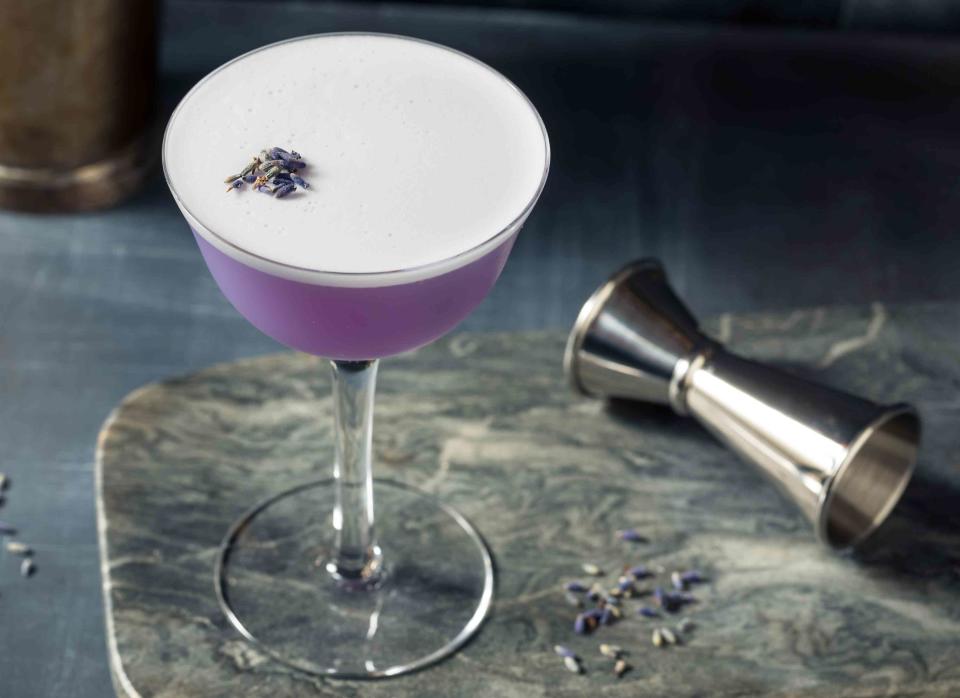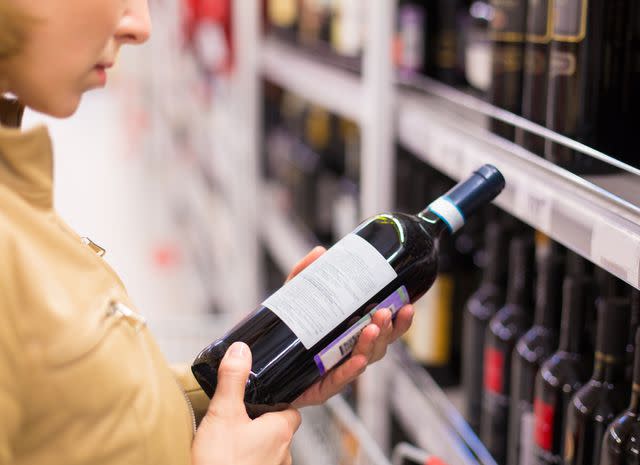5 Drink Trends to Sip in 2024, From Pickle Martinis to Floral Flavors
Raise a glass to these tasty innovations in cocktails and wine—and how we enjoy them.

bhofack2 / Getty Images
Here's to more delicious and diverse drinks in the new year. A lot of tasty innovation is happening; whether you enjoy a kick or prefer something without alcohol, new and interesting flavors and combinations make this year's drinks more exciting than ever. Our predictions for the next big trends come from what knowledgeable beverage pros are seeing from behind the bar and insights from other industry insiders as well. Raise your glass to lots of good things to drink in 2024!
Related: Stirred, Never Shaken: An Expert Shares the Correct Way to Make a Martini
Savory Cocktails
Go beyond the dirty martini and bloody Mary; savory cocktails are really making a splash. What might have seemed like a trendy outlier, these drinks are evolving with unique and sophisticated flavors. Bartenders are incorporating ingredients like sesame, pickles, tomatoes, corn, mushrooms, ramps, and even broths to elevate high-end cocktails. Searches on Yelp also reflect a surge in interest for unique savory cocktail options such as matcha martinis, tomato-tinis, pickle martinis, and truffle martinis—and experts think this trend will only get bigger.
A few factors might be at play behind this surge of curiosity over all things saline and umami. Sweet and bitter cocktails have dominated drink menus for so long that cocktail fans were bound to crave something different—and kitchen techniques have been working their way into craft cocktails for some time now. Bonnie's in Brooklyn, New York, has a wildly popular MSG Martini, while Apricity in London shakes up an asparagus martini. There are also salty spirits, like Mermaid Vodka, that offer new possibilities for making cocktails.
"Fermented and pickled foods are hugely popular both in restaurant cuisine and at home, and those flavor profiles have migrated from the kitchen to the bar," says Lissa Brennan of Con Alma Restaurant and Jazz Bar in Pittsburgh. She notes that many people started preserving their own food during the pandemic. It was something to do and easy, inexpensive, educational, and delicious. "So, we have rediscovered something centuries old and practiced by all cultures, making it both adventurous and familiar," she says.
The no-waste trend also contributes to this new movement with bartenders upcycling kitchen leftovers. "Leftover savory ingredients from the kitchen like vegetables strained from stock and broths to mushrooms, corn, and even chicken fat are being used to add another dimension to high-end cocktails," says Andrew Hueston, bar manager at El Vez in Philadelphia.
Interested in trying savory cocktails but not sure you're ready to take the plunge into a pho-broth martini? Theresa Schreiber, owner of Aviation Rooftop Bar & Kitchen in Livermore, California, recommends pairing your cocktail with a savory snack as a smart first step: "Take a bite of salty Parmesan crisp, olive, or chip with caviar—that way, you get more notes than if the whole drink is 'extra dirty.'"
Adventurous Floral and Fruit Flavors
Lemon, lime, and cranberry will always be staples of the drinks repertoire, but the next wave of cocktails is about embracing more unique flavors like elderflower, lavender, hibiscus, yuzu, and tamarind. “In 2024, I expect to see more and different uses of oils, extracts of botanicals, flowers, and other sustainably sourced aromatics to create elevated versions of the classic and new modern cocktails that we have in the industry," says Sebastian Moreno, bar manager at Xcaret Grill and Cantina in Winston-Salem, North Carolina.
“I'm definitely seeing more additions of herbal and floral essences, elderflower being the most popular and well-recognized,” says Samantha Tisci, a beverage marketing executive. “I work on a national scale and there's a huge shift from people being attracted to overly sweet, artificial cocktails and gravitating towards fresh, organic tastes.” She agrees that elderflower is a great gateway to floral flavors.
What about the Aperol spritz? That's so 2021, but the spritz isn’t over. "The spritz is taking on a new life with hibiscus and ginger," says Monique Vaughan, owner of The M3 Experience and bartender at Azotea Cantina in Atlanta. Try a spritz made with Sorel liqueur. It’s made from Moroccan hibiscus, Nigerian ginger, Brazilian cloves, and cassia and nutmeg from Indonesia.
Coffee Cocktails
The popularity of coffee-based cocktails continues, as indicated by a notable 118 percent increase in searches for the trendy carajillo, reported by Yelp's Food and Drink Trends.
The carajillo is a spiked two-ingredient coffee drink made with espresso and Licor 43, a unique citrus and vanilla liqueur—and it might just be the hottest emerging star of the 2024 cocktail scene. Praised for its simplicity and versatility, it's perfect for brunch, happy hour, or a post-dinner digestif, and it's only going to get bigger. "The carajillo is sure to be the next espresso martini, and after that, I would expect us to be leaning into other methods of caffeine-hitting cocktails with matcha, maté, or other adaptogenics and nutropics," says Shannon Michelle, founder of cocktail consulting and mobile bartending company Brass Ring Cocktails in Jacksonville, Florida.
This surge in interest in coffee cocktails extends beyond the classic espresso martini to other coffee-infused concoctions as well, including the affogato, coffee milkshakes, white Russians, a vodka-coffee-club soda cocktail called the mind eraser, and the ever-popular mudslide.
Moderation Is In: The "Low and No" Movement
Manhattans, old fashioneds, and nostalgic martinis are more popular than ever, but cocktail lovers aren't necessarily drinking them every night. Instead, they're supplementing their imbibing with low-ABV cocktails based on vermouth, sherry, amaro, and even creative non-alcoholic craft drinks. According to IWSR Drinks Market Analysis, 78 percent of consumers of low- and no-alcohol products also drink full-strength alcohol; the largest subset (41 percent of low- and no-alcohol consumers) are classified as "substitutes," who choose low and no-alcohol products when avoiding alcohol on certain occasions. More drinkers are choosing to consume less alcohol, whether that's certain evenings at home, when they have to drive, or even alternating their cocktails at bars with a spirit-free drink. IWSR notes that more than half (58 percent) of low- and no-alcohol consumers report that they choose to switch between low/no and full-strength alcohol products on the same occasion. Moderation, not abstention, seems to be the trend—and bars are providing more creative options than ever before.
"I love the new options. People are choosing not to consume alcohol for a variety of reasons, and no one should be left out of the party. There's no reason that zero proof/non-alc drinks shouldn't be every bit as creative and tasty as their intoxicating counterparts," says Robin Wolf, cocktail consultant and owner of SLO Bitter Co., a small-batch artisanal bitters maker.
And there's no need to be self-conscious about ordering a non-alcoholic cocktail at a bar. "The normalization of non-alcoholic beverages on menus, and not questioning that choice, is huge. We want to be inclusive and not single out that choice," says Jessica Pomerantz, bartender at Smoked SC in Columbia, South Carolina. "I see bars as social meeting places coming back in a big way, with less of a focus on volume drinking and more on Third Place culture," says Jabriel Donohue, owner of The Admiralty Lounge in Bellingham, Washington. That means that bartenders are putting a new emphasis on being welcoming and warm, regardless of what menu items you order.
Transparency in Wine Labeling

97 / Getty Images
If you enjoy European wines, you'll notice something different about wines released after Dec. 8, 2023: more informative labels. Wineries are now required by the EU to list the nutrition information, ingredients, and allergens right on the label, either directly printed or via a QR code. This is amazing news for wine lovers, who have long been sold the notion that wines are made from grapes and sunshine. In reality, over 60 additives are allowed in winemaking. These new EU regulations mean that wine will be aligned with other food products.
Once consumers are given access to more informed and enlightened sipping, it's possible that wineries in other regions may also jump on the bandwagon and offer more transparency in their products. Jay James MS, president of Benchmark Wine Group, a resource for fine and rare wines, says the U.S. Tobacco and Trade Bureau—the government agency responsible for regulating alcohol labeling—is deliberating making transparent labels mandatory in the U.S. "If, or when, ingredient labeling becomes mandatory in the U.S., with EU wines requiring similar labeling standards—together, that could influence global consumer desire for ingredient labeling. I don't believe that the EU or U.S. requirements alone would have the same effect that they will when happening together," he says. We'll have to wait and see how all of this plays out.
We're already seeing more wineries in the U.S. clearly labeling their wines as organic or vegan—and it's a huge win for wine drinkers to be able to easily access this information when shopping at their local wine store. We hope this trend continues to grow and become the standard.
Read the original article on Martha Stewart.

